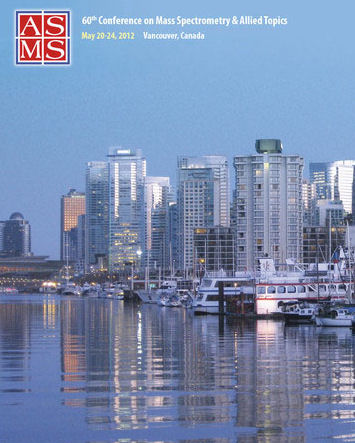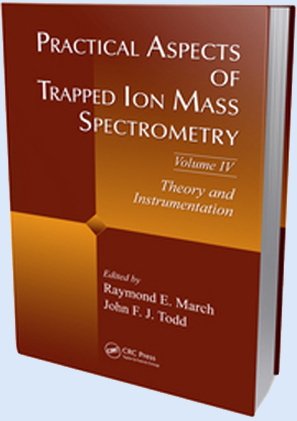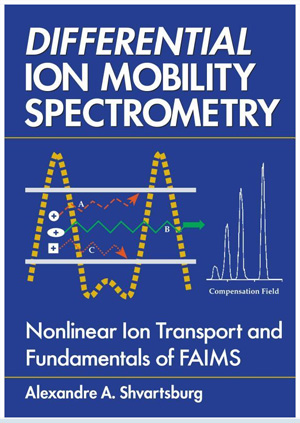






Selected original early publications about FAIMS
(1)Separation of ions according to mobility in strong ac fields.
(2)A new method of separation of multi-atomic ions by mobility at atmospheric
pressure using a high-frequency amplitude-asymmetric strong electric field.
(3)Mass spectrometric characterization of a high-field asymmetric waveform ion
mobility spectrometer.
(4)A method of reducing diffusion losses in a drift spectrometer.
(5)Atmospheric pressure ion focusing in a high-field asymmetric waveform ion
mobility spectrometer.
(6)
High field asymmetric waveform ion mobility spectrometry-mass spectrometry:
an investigation of leucine enkephalin ions produced by electrospray ionization.
(7)Electrospray ionization high-field asymmetric waveform ion mobility spectrometry-mass
spectrometry.
(8)Separation of leucine and isoleucine by electrospray ionization high-field
asymmetric waveform ion mobility spectrometry-mass spectrometry.
(9)Detection of chlorinated and brominated byproducts of drinking water disinfection
using electrospray ionization high - field asymmetric waveform ion mobility
spectrometry - mass spectrometry.
(10)Ion trapping at atmospheric pressure (760 Torr) and room temperature with
a high-field asymmetric waveform ion mobility spectrometer
FAIMS meeting ...
News Release from: Thermo Fisher Scientific 07/05/2009
MASS SPECTROMETRY BOOK
Title: Practical Aspects of Trapped Ion Mass Spectrometry, Volume IV: Theory and Instrumentation
Title: Differential Ion Mobility Spectrometry: Nonlinear Ion Transport and Fundamentals of FAIMS
Book overview
Over the last decade, scientific and engineering interests have been shifting from conventional ion mobility spectrometry (IMS) to field asymmetric waveform ion mobility spectrometry (FAIMS). Differential Ion Mobility Spectrometry: Nonlinear Ion Transport and Fundamentals of FAIMS explores this new analytical technology that separates and characterizes ions by the difference between their mobility in gases at high and low electric fields. It also covers the novel topics of higher-order differential IMS and IMS with alignment of dipole direction.The book relates the fundamentals of FAIMS and other nonlinear IMS methods to the physics of gas-phase ion transport. It begins with the basics of ion diffusion and mobility in gases, covering the main attributes of conventional IMS that are relevant to all IMS approaches. Building on this foundation, the author reviews diverse high-field transport phenomena that underlie differential IMS. He discusses the conceptual implementation andfirst-principles optimization of FAIMS as a filtering technique, emphasizing the dependence of FAIMS performance metrics on instrumental parameters and properties of ion species. He also explores ion reactions in FAIMS caused by field heating and the effects of inhomogeneous electric field in curved FAIMS gaps. Written by an accomplished scientist in the field, this state-of-the-art book supplies the foundation to understand the new technology of nonlinear IMS methods
Buryakov, I. A.; Krylov, E. V.; Makas, A. L.; Nazarov, E. G.; Pervukhin, V.V.; Rasulev, U. K.
Sov. Tech. Phys. Lett., 1991, v17(6), p.446-47.
Buryakov, I. A.; Krylov, E. V.; Nazarov, E. G.; Rasulev, U. K.
Int. J. Mass Spectrom. Ion Proc., 1993, v128, p.143-8.
Purves, Randy W; Guevremont, Roger; Day, Stephen; Pipich, Charles W.; Matyjaszczyk, Matthew S.
Review of Scientific Instruments, 1998, v.69, n.12, p.4094, 12p.
Krylov, E. V.
Tech. Phys., 1999, v44, p.113-6.
Guevremont, Roger; Purves, Randy W.
Review of Scientific Instruments, 1999, v.70, n.2, p.1370, 14p.
Guevremont, Roger; Purves, Randy W.
Journal of the American Society for Mass Spectrometry, 1999,
v.10, p492-501.
Purves, Randy W; Guevremont, Roger
Analytical Chemistry, 1999, v71, p.2346-2357.
Barnett, David A.; Ells, Barbara; Guevremont, Roger; Purves, Randy W.
Journal of the American Society for Mass Spectrometry, 1999,
v10, 1279-1284.
Ells, Barbara; Barnett, David A.; Froese, Ken; Purves, Randy W.; Hrudey,
Steve; Guevremont, Roger
Analytical Chemistry, 1999, v71, p. 4747-52.
Guevremont, Roger; Purves, Randy W.; Barnett, David A.; Ding, Luyi
International Journal of Mass Spectrometry, 1999, v193, p. 45-56.
Conferences

ASMS Conference 2012
60th ASMS Conference on Mass Spectrometry and Allied Topics
May 20 - 24, 2012
Vancouver, Canada
FAIMS oral session
TUESDAY, MAY 22
8:30 - 10:30 am Oral Sessions
FAIMS and DMS: New Developments and Applications

ASMS Conference 2013
61st ASMS Conference on Mass Spectrometry and Allied Topics
June 9 - 13, 2013
Minneapolis, Minnesota
FAIMS oral session
MONDAY, JUNE 10
8:30 - 10:30 am Oral Sessions
FAIMS and DMS: New Developments and Applications
Thermo Fisher Scientific Event Showcases New Breakthroughs in FAIMS
Thermo Fisher Scientific Inc. announced that researchers attending its first ever FAIMS (high-field asymmetric waveform ion mobility spectrometry) meeting in Germany showcased ground-breaking findings. Attendees presented a number of breakthroughs enabled through their use of the FAIMS technology. For example, Michael Blackburn, working with colleagues at sanofi-aventis, described how FAIMS can be used to successfully filter out matrix interferences from mass spectrometry data, leaving a cleaner signal and making it easier to validate bioanalytical methods used in drug development.
Dr. Axel Roemer, an expert in small molecule quantization based at the German contract research organization A&M Labor, presented the keynote lecture. In it he described his company's efforts to improve protein and peptide analysis, and presented the world's first validated method for peptide analysis using FAIMS-based LC-MS (LC-FAIMS-MS). Using peptides in rat serum, Roemer and colleagues have shown that LC-FAIMS-MS chromatograms offer greatly reduced chemical backgrounds compared to those produced without FAIMS. By successfully filtering out complex matrix interferences, which prevent method validation in a traditional LC-MS assay, Roemer reports lower limits of detection as small as 10 ng/mL (100 times smaller than the 1 ug/mL offered by other companies). A&M Labor expects to have even better results at next year's meeting.
FAIMS meeting in Germany
Publisher: CRC Press,Taylor and Francis Group
Editor(s): Raymond E. March, Trent University, Peterborough, Ontario, Canada; John F.J Todd, University of Kent, Canterbury, UK
Article: High-Field Asymmetric Waveform Ion Mobility Spectrometry (FAIMS), Randall W. Purves, p. 308, Publication Date: July 12, 2010

PHYSICS BOOK
Author: Alexandre A. Shvartsburg
Publisher: CRC Press, 2008

Overview
Preview pages